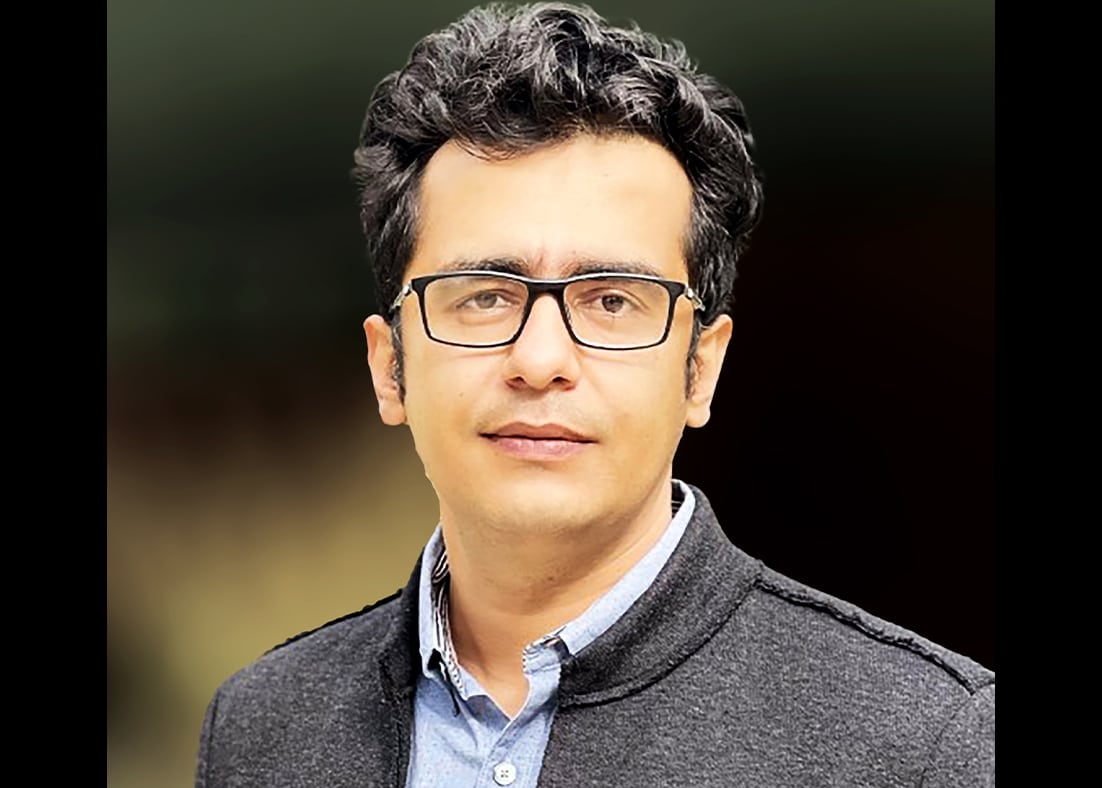Penn State
Stuckeman School Names Recipients of Interdisciplinary Design Professorship
UNIVERSITY PARK, Pa. — The College of Arts and Architecture’s Stuckeman School at Penn State has named two recipients of its Interdisciplinary Design Professorship: Hannes Famira, graphic designer, type designer and founding principal of FamiraFonts, and Luisa Caldas, professor of architecture and director of the XR Lab at the University of California, Berkeley College of Environmental Design.
The Interdisciplinary Design Professorship is awarded biennially to a visiting full professor or professor of practice who is nominated by a member of the Stuckeman School faculty. The visitor’s presence on campus is intended to enhance key aspects of the host faculty’s research/creative endeavors and/or an important element of the curriculum that will ultimately have far-reaching impact for the host faculty, the department or program, and the Stuckeman School.
“We are thrilled to have generous donors who support our faculty in advancing their research while also engaging with world-renowned professors through the Interdisciplinary Design Professorship,” said Chingwen Cheng, Stuckeman School director. “These academics join our faculty and engage students across disciplines in various research and teaching activities to share knowledge and skills and to help shape design education collectively.”
Emily Burns, assistant professor of graphic design at the Stuckeman School, nominated Famira, who will hold the professorship through December 2024.
Famira founded FamiraFonts, which publishes and distributes digital typefaces, in New York City in 2000. He has been an adjunct lecturer at The Cooper Union for the Advancement of Science and Art since 2006 and has taught at the School for Design in Basel, The Cooper Union, the School of Visual Arts in New York, the University of the Arts in Philadelphia, New Jersey City University, the Hochschule für angewandte Wissenschaft und Kunst Hildesheim/Holzminden/Göttingen, the Kunsthochschule Kassel and the City University of New York.
Famira studied graphic and typographic design at the KABK (Royal Academy of Fine Arts in The Hague) in the Netherlands. After apprenticeships at Studio Dumbar and the Font Bureau, he worked at Meta Design, at the Buro Petr van Blokland and at House Industries.
Famira started his own design studio Das Kombinat in 1999 and the Kombinat-Typefounders in 2001.
At Penn State, Famira and Burns will work together to design, develop and disseminate new typefaces based on research of unconventional typographic examples, leveraging the design process to reveal potential innovative approaches in typography and type design. Famira will present a public lecture and workshop centered on type design and the foundational structure of typographic forms and systems, and he will engage in critiques of student design projects.
“I am thrilled to undertake this project with Professor Famira,” said Burns. “His extensive knowledge of the history of typography, the design process, and teaching design, culminate in exciting opportunities for growth and the emergence of innovative ideas through collaboration.”
Orsoyla Gáspár, assistant professor of architecture at the Stuckeman School, nominated Caldas, who will hold the Interdisciplinary Design Professorship from July 2024 to June 2025.
Caldas has more than 20 years of experience in the field of sustainable design and green building, both in academia and as an energy consultant for large commercial buildings. Her work focuses on the use of advanced computational tools to support sustainability input in early design decision-making.
At UC Berkeley, Caldas directs the XR Lab – Virtual, Augmented and Mixed Reality Laboratory – which focuses on the use of immersive environments for building design and simulation, healthcare design, ADA, parametric and generative design, UI/UX, narrative and storytelling. She is a member of the HTC Center for Enhanced Reality at UC Berkeley.
Her most recent project at the XR Lab is Virtual Bauer Wurster, a multiplayer remote collaboration platform in virtual reality.
Caldas holds a doctorate in architecture and building technology from MIT and a master’s degree from the Bartlett Graduate School, University College London. Caldas received her professional architecture degree from the University of Lisbon and practiced as a licensed architect before becoming a researcher, educator and immersive environments creator.
While at Penn State, Caldas and Gáspár will study the broad topic of adequate representation of architectural heritage in the 21st century by exploring the use of augmented and virtual reality to help increase the visibility and impact of the Stuckeman School’s Immersive Environments Lab in the Stuckeman Center for Design Computing. Caldas will assist Gáspar in the teaching of an upper-level architecture Directed Research Studio course in fall 2024 titled “Visionary Visuals Revamped” and the duo will present their findings in a public showcase.
“Working on this project with Professor Caldas will provide a novel framework that can be generalized to facilitate contemporary interaction with elements of architectural history, which is a topic that is of deep interest to both of us,” said Gáspár.
Penn State
Stuckeman Architecture Graduate Awarded International Dissertation Prize
UNIVERSITY PARK, Pa. — Farzad Hashemi, who graduated from Penn State in 2023 with a doctorate in architecture, was recently named the recipient of the Architectural Research Centers Consortium (ARCC) Dissertation Award. He is the second recipient of the prestigious research award in as many years from the College of Arts and Architecture’s Stuckeman School, with Elena Vazquez, a 2022 architecture doctorate alumna, earning the prize last year.
The ARCC is an international association of architectural research centers, academies and organizations committed to the research culture and supporting infrastructure of architecture and related design disciplines. The ARCC board presents the dissertation award annually to honor significant new research in architecture and environmental design and to recognize the achievement of an emerging scholar.
“We found [Hashemi’s] research problem to be well-defined. The abstract is clear and succinct, and the overall dissertation has a clear structure, problem definition and writing,” the ARCC board reported. “We noted that the work uses a multi-method research design, quantifiable modeling, analysis and simulation.”
In his dissertation, titled “Novel Parametric Workflow for Simulating Urban Heat Island (UHI) Effects on Building Energy Performance: A Case Study of Seven U.S. Cities,” Hashemi developed a novel methodology that couples the Local Climate Zones classification system with the Urban Weather Generator tool to produce urban-specific climate data. According to Hashemi, the methodology was crafted to address the inadequacies of typical meteorological year data, which is predominantly gathered from open spaces such as airports and typically misses the unique climate conditions of urban areas.
“Utilizing this methodology, I generated a series of urban-centric climate data for seven U.S. cities, each located in a distinct climate zone,” he said. “This modified data was applied in energy simulations for commercial and residential building prototypes provided by the International Energy Conservation Code, offering a detailed evaluation of how the UHI effect influences energy consumption in buildings.”
By offering a more accurate representation of urban climates, Hashemi said his methodology can enhance the precision of building energy models and can lead to more effective strategies for energy conservation and climate resilience in urban planning and architecture. It can also aid in the development of more accurate climate action plans by providing data that better reflects the thermal environment of urban areas, which may contribute to more sustainable urban development.
“This approach can inform architects, building engineers and researchers about the importance of incorporating localized climate data in the planning and retrofitting of urban spaces to mitigate the UHI effect, enhance living conditions and reduce energy consumption,” Hashemi said.
Hashemi said it was “an immense honor” to have received the ARCC Dissertation Award.
“[The award] acknowledges not only the innovative aspect of my research but also its critical role in steering the development of urban environments towards greater resilience and sustainability,” he said. “Through enhancing our approach to modeling urban climates, we are setting the stage for more precise building energy simulations. These are essential for creating cities capable of meeting the demands posed by climate change and urban growth.”
Originally from Iran, Hashemi was a researcher in the Hamer Center for Community Design for five years during his time in the Stuckeman School at Penn State. He is now an assistant professor of architecture and an affiliate assistant professor of mechanical engineering at the University of Texas, San Antonio, Klesse College of Engineering and Integrated Design.
He holds a master of science in architecture from Iowa State University, a master of architecture from Politecnico di Milano University, Italy, and a bachelor of architecture from Shahid Bahonar University of Kemran, Iran.

 Study Architecture
Study Architecture  ProPEL
ProPEL 



